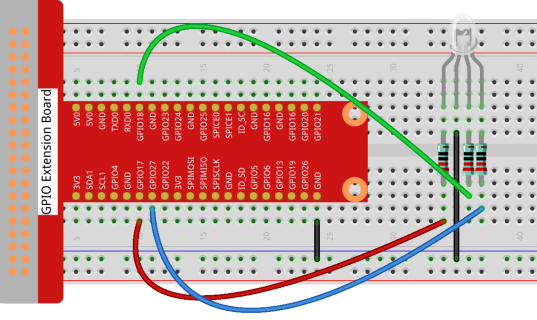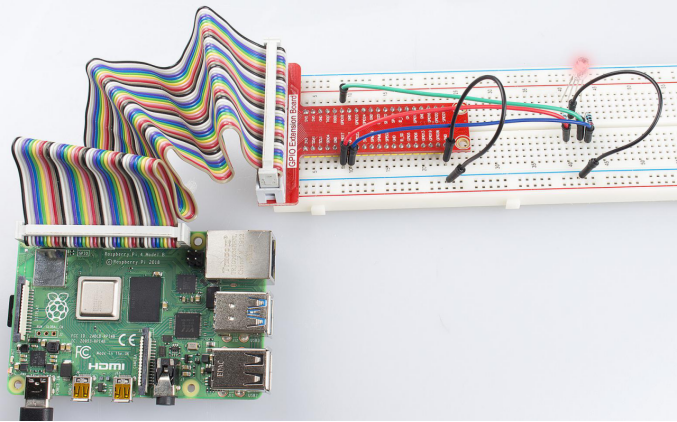Introduction
Previously we’ve used the PWM technology to control an LED brighten and dim. In this lesson, we will use it to control an RGB LED to flash various kinds of colors.
Components
– 1 * Raspberry Pi
– 1 * Breadboard
– 1 * RGB LED
– 3 * Resistor (220Ω)
– Several jumper wires
Principle
RGB
RGB LEDs emit light in various colors. RGB stands for the red, green, and blue color channels and is an industry color standard. They package three LEDs of red, green, and blue into a transparent or semitransparent plastic shell and have four pins. An RGB LED can display various new colors by changing the three channels and superimposing them, which, according to statistics, can create 16,777,216 different colors.
The three primary colors can be mixed into various colors by brightness. The brightness of LED can be adjusted with PWM. Raspberry Pi has only one channel for hardware PWM output, but it needs three channels to control the RGB LED, which means it is difficult to control the RGB LED with the hardware PWM of Raspberry Pi. Fortunately, the softPwm library simulates PWM (softPwm) by programming. You only need to include the header file softPwm.h (for C language users), and then call the API it provides to easily control the RGB LED by multi-channel PWM output, so as to display all kinds of color.
RGB LEDs can be categorized into common anode and common cathode ones. In this experiment, the latter is used.
Schematic Diagram

Experimental Procedures
Step 1: Build the circuit.

For C Language Users:
Step 2: Change directory.
cd /home/pi/Sunfounder_SuperKit_C_code_for_RaspberryPi/05_RGB/Step 3: Compile.
gcc rgb.c -o rgb -lwiringPi -lpthreadStep 4: Run.
sudo ./rgbFor Python Users:
Step 2: Change directory.
cd /home/pi/Sunfounder_SuperKit_Python_code_for_RaspberryPi/Step 3: Run.
sudo python3 05_rgb.pyHere you should see the RGB LED flash different colors in turn.

Further Exploration
You can modify the parameters of the function ledColorSet( ) by yourself, and then compile and run the code to see the color changes of the RGB LED.
Experimental Summary
In this experiment, you have learnt how to control RGB LEDs with the softPwm of Raspberry Pi in this experiment. Try to apply the softPwm to DC motor speed regulation.
